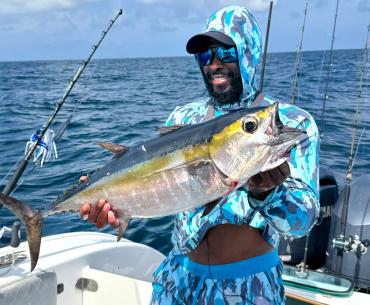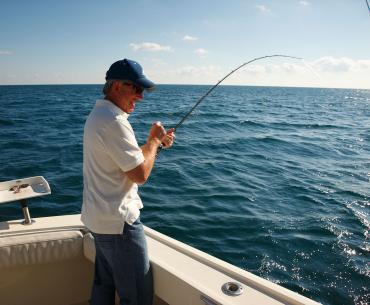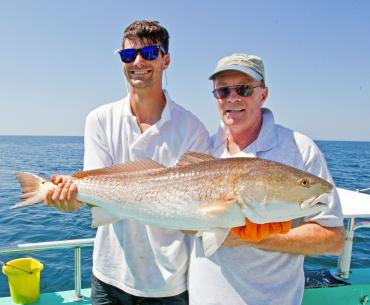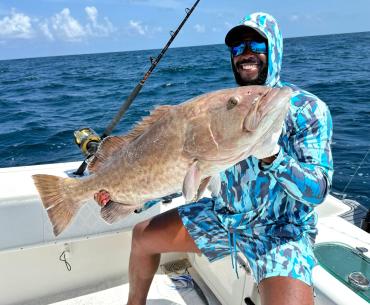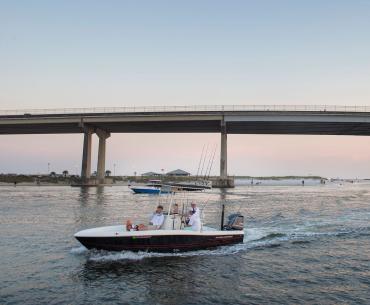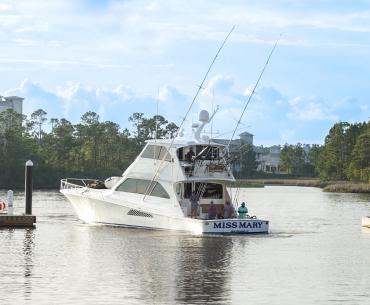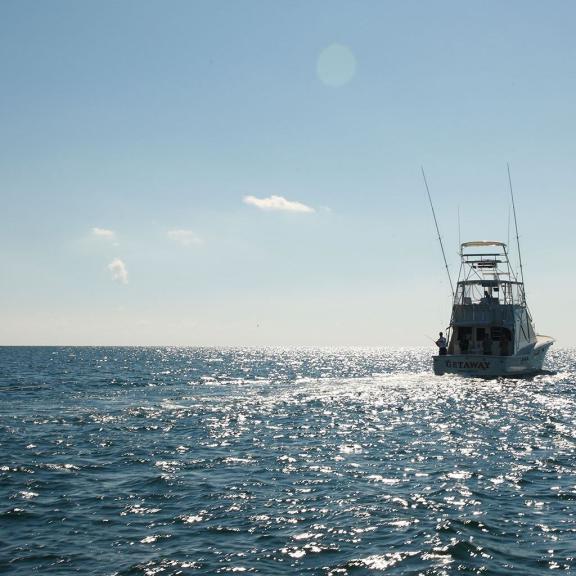
Learn more about fishing the continually expanding artificial reef zones of Alabama near Orange Beach & Gulf Shores.
Alabama’s artificial reef zones, already the largest in the nation, grew last fall by an additional 110 square miles of Gulf of Mexico bottom. Private anglers and charter boats now have more locations to hook some of the most desirable species the Gulf offers, including Alabama’s signature species, red snapper.

Marine Resources Division (MRD) of the Alabama Department of Conservation and Natural Resources (ADCNR) received the authorization of two additional permit areas from the U.S. Army Corps of Engineers as part of an overall $8.135 million expansion of the Alabama Artificial Reef Program.
Grants from the National Fish and Wildlife Foundation’s Gulf Environmental Benefit Fund, established with criminal fines after the Deepwater Horizon Oil Spill, will also allow MRD to deploy artificial reefs in both nearshore and offshore reef zones. The 6 to 9-mile reef zone expanded an additional 23 square miles near Gulf Shores and Fort Morgan and another 24 square miles offshore Orange Beach.
The largest of the new reef zones is between 13 and 25 miles south of Dauphin Island and adds 63 square miles for the 110-square-mile total of new water bottom for constructing artificial reefs. The new reef zone was named in honor of ADCNR Commissioner Chris Blankenship.
In the six- to nine-mile reef zones, a total of 1,203 juvenile reef fish shelters will be deployed at numerous locations, with three to ten shelters per reef site. The modules are 4.5-foot-diameter concrete discs placed on a pedestal and embedded in a concrete slab. Each module will have four discs and serve as a habitat for several juvenile fish species, including gray triggerfish, red snapper, gray snapper and lane snapper. These structures will provide protection as the juveniles grow before moving into the offshore reef habitat.
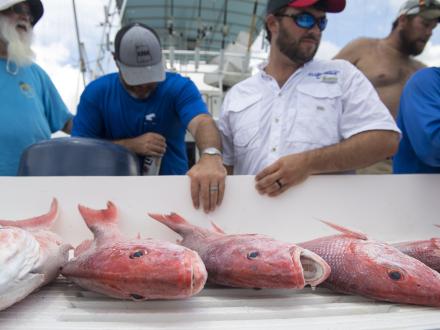
MRD executed a $4.9 million contract to deploy 456 pyramid-shaped modules, each 25-feet-tall and made of concrete and limestone. At the Blankenship reef zone south of Dauphin Island, 164 modules will create 123 reefs. Some of the reef sites will have two modules and others a single module. In the 24- square mile zone off Orange Beach, 64 of the pyramids will create 48 reef sites.
Farther offshore, 35 miles and beyond, 228 pyramid modules will make 172 new reef sites. At those offshore sites, the 25-foot-tall pyramids will be deployed in single and double models and provide additional structure to existing small pyramids deployed in 2004 and 2005.
Also, the Alabama Wildlife Federation completed a reef project in Alabama’s artificial reef zone with 88 new reef locations.
With the additional 110 square miles, the Alabama Artificial Reef Program now encompasses more than 1,136 square miles of water bottom in the Gulf. More information about the Alabama Artificial Reef Program and coordinates for the reefs can be found on Outdoor Alabama.
Save the waypoints to your electronics and get ready for another outstanding season of catching red snapper and other reef fish species this year.
